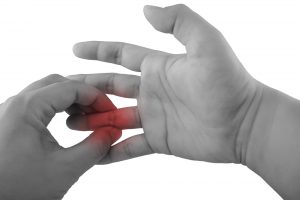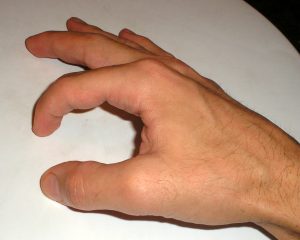PIP joint: Everything you need to know about the cause, symptoms, diagnosis, treatment and surgery of arthritis of the PIP joint
Osteoarthritis in the hands occurs most in the “Proximal Inter Phalangeal” (PIP) joint of the fingers. We refer to this as the PIP joint. From the fingertip, it is the second joint, which is just below the center of your fingers. These are the knuckles you use to tap the window. The PIP joint is a hinge joint and plays a central role in the gripping function. The thumb does not have a PIP joint because it contains only two phalanges in contrast to the fingers.
What is the cause of osteoarthritis in the PIP joint?
Like all other joints of your body, a layer of cartilage coats the surfaces of the joints in your fingers. This allows the joints to move smoothly and painlessly. When getting older, this cartilage between the fingers may start to wear. This causes arthritis on the PIP joint. Rheumatoid arthritis can also cause damage to the cartilage in this important finger joint. The inflammation then irritates the cartilage, causing damage to this elastic tissue. Accidents or old improperly healed injuries can also cause problems with the PIP joint.
What are the symptoms of osteoarthritis of the PIP joint?
Pain is a common symptom of Osteoarthritis of the PIP joint in the initial phase. As the cartilage wears out further, stiffness and loss of strength may also occur. This makes it harder to lift items, and swelling may also occur. The PIP joint may also deform. There is a chance that new bone tissue will develop on the joint ends where the cartilage has partially or completely disappeared.
How does your doctor diagnose osteoarthritis of the PIP joint?
Your GP can often make the diagnosis very simply. He will ask you about the pain and stiffness you experience when trying to move the affected finger. During a physical examination, the GP will pay attention to swelling and bony thickenings of the PIP joint.
How do you treat arthrosis of the PIP joint?
Alleviating pain, and preventing the malformation of the PIP joint is the goal of treatment. This can be by done by following an exercise program, wearing a splint and/or using painkillers. If this does not have enough result, your GP may refer you to an orthopedic surgeon for an operation on the PIP joint.
What kind of surgery is possible in arthritis of the PIP joint?
In case of severe wear of the PIP joint – which is usually accompanied by a lot of pain and loss of function – surgery is possible. Synovectomy removes the mucous membranes to prevent swelling and slowing the PIP joint injury process. After a few years the tissues will grow again and this operation will have to be repeated. Both parts of the PIP joint become stuck, causing arthrodesis. The goal of this surgical procedure is to eliminate the pain. However, there is no more movement in the joint. The surgery is called an arthroplasty. During this procedure the damaged joint is completely removed and replaced by an artificial joint. Usually, in arthroplasty of the index finger, no PIP prosthesis will be used. Fixating the index finger is preferred because it allows for a more stable and firm gripping function.

Share this page
Tweet

Download for free the booklet ‘Moving without pain’ with a retail value of $6.75 / £4.95.
Any questions? Please feel free to contact us. Contact us.







